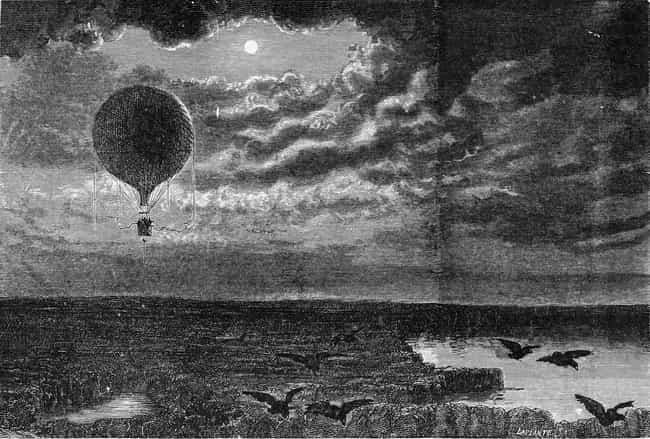The specifics of balloons and ballooning during the 18th and 19th centuries were different from today. A balloon was essentially a bag of light gas - often hydrogen - lifting a basket off the ground. To ascend, a tether line was cut and some sort of ballast, like sand, was thrown from the basket. To come back to Earth, the gas was let out of the balloon with a valve.
In July 1862, Glaisher and Coxwell set out on their first flight in a balloon of this sort. They launched from Wolverhampton, with Glaisher hoping to conduct a series of tests on sound, solar radiation, and oxygen levels. They used a balloon made by Coxwell at his own expense, "not made of silk, but of American cloth, a material possessed of great strength." Loaded with 60,000 feet of gas, they took off in what Glaisher called "bad weather."
During the flight in July, Glaisher and Coxwell reached at least 22,357 feet, perhaps even 26,000. All the while, Glaisher kept track of how his body was reacting to so little oxygen, nothing that he felt heart palpitations around 19,000 feet and something "analogous to sea-sickness" at roughly 21,500. On a second ascent on August 18, they reached 24,000 feet. (Read more.)
Share



















No comments:
Post a Comment